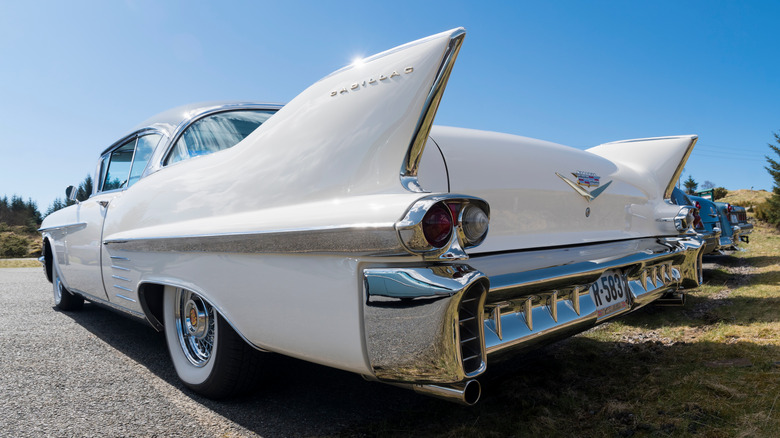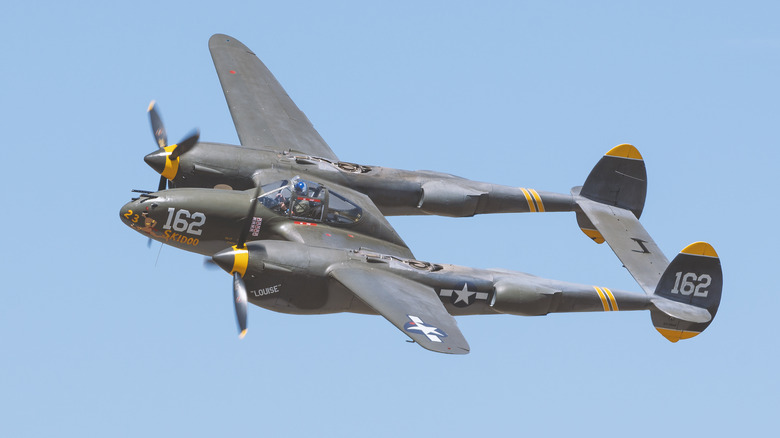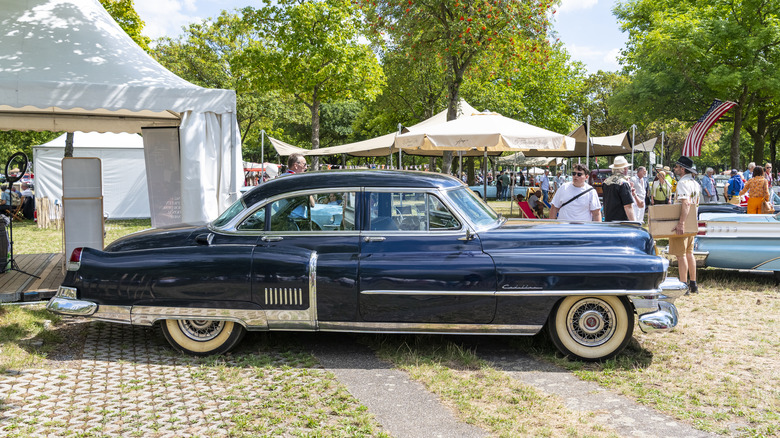The Interesting Story Of How Cadillacs Got Their Tailfins
As the mood boards on the walls of design studios the world over will tell you, cars have borrowed much of their aesthetic from animals and aircraft for the best part of a century. From the aircraft canopy-like glasshouses of unique coachbuilt vehicles of the 1930s—the 1938 Hispano-Suiza H6B Dubonnet is a fine example—to the shark-like dorsal fins stabilizing today's Le Mans racers, planes, cars, and animals, particularly fish, share a great deal.
This is also true of the iconic tailfins first fitted to Cadillacs of the late-1940s, then later adopted by automakers on both sides of the Atlantic through much of the next two decades.
The exact genesis of the tailfin is open to debate, with General Motors designer Harley Earl and his student Franklin Quick Hershey both credited with its invention. In truth, it may well have been something of a combined effort—and their inspiration came from both the skies and the sea.
Earl reportedly got his inspiration for Cadillac's tailfins from the Lockheed P-38 Lightning, a fighter plane introduced in 1940 and played a key role in World War II. Crucially for our story, it featured a twin-tail design which, according to William Knoedelseder's 2018 book "Fins," inspired Earl to incorporate the look on a car. He took his design team to the Selfridge Field air base, 30 miles north of Detroit, for a closer look at the aircraft.
Inspired by the Lockheed P-38 Lightning
Here, Hershey saw how the twin tail of the P-38 could work on a car and how the design reminded him of the fins of sea life. Knoedelseder wrote: "Looking at the plane's twin tail rudders that day, Hershey immediately thought of fins on sea creatures...It struck him that fins were wondrous creations of nature—beautiful, sleek, and shiny, streamlined and symmetrical, the embodiment of power, speed, maneuverability, and stability, everything that a modern automobile should be."
The rest of Earl's design team was enamored too. Michael Lamm and Dave Holls wrote in "A Century of Automotive Style: 100 Years of American Car Design," "They went back to their studios and started doing sketches of cars with tailfins. The P-38 also prompted other aircraft motifs: Plexiglas canopies, various air intakes, grille spinners, and bumper bullets."
Little progress was made on the two men's tailfin ambitions until Hershey was discharged from the US Navy and returned to General Motors in 1944, and the war ended the following year. Now leading Cadillac's design department at the instruction of Earl, and with the opportunity to inject design flare into post-war automobiles, Hershey crowned the swooping rear fenders of the 1946 Cadillac Interceptor concept with upwards flicks containing taillamps—and the tailfin was born. But work still had to be done to get the tailfin from a concept to a production car reality.
How the first tailfinned car was almost a Vauxhall
Soon after, Hershey and Ned Nickles, a member of Earl's design team who was also on the trip to Selfridge Field, had moved to GM's export and special car design studio. Here they worked under the European brand of Opel and its British sibling Vauxhall. According to Lamm and Holls, Hershey fitted the same Cadillac tailfins to the rear of a Vauxhall concept, but that failed to materialize, and the fins were moved back to Cadillac, where they made production in 1948.
Regarded as a stroke of genius today, Cadillac's first tailfin didn't land so well, with Earl later confessing to a newspaper reporter: "When I saw the P-38 rudders sticking up, it gave me an idea for use after the war. But when we introduced fins, we almost started a war within the corporation." Lamm and Holls wrote how Earl and Cadillac general manager Nick Dreystadt couldn't make up their mind on the fins—fins which, by later standards, would have seemed remarkably tame but at the time were somewhat radical.
Eventually, the fins won over the design team and enjoyed two decades of success. During that time, the jet age of the mid-1950s saw car designers again inspired by aircraft, fitting ever-larger, sharper, and more dramatic tailfins, which by the mid-1960s defined many cars' entire aesthetic.
Through the '50s and '60s, tailfins were featured on cars from Buick, Chevrolet, and Dodge, to Ford, Mercedes-Benz, Peugeot, and Volvo.


